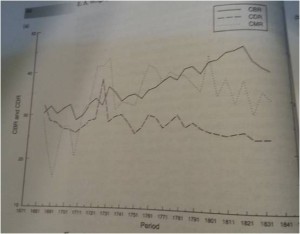The Lewis Model
Describe carefully the Lewis dualistic labour surplus model. Does the Lewis model describe accurately the process of economic development in poor countries?
The Model
The Lewis model proposes a dualistic economy consisting of a formal, industrial and urban sector, and an informal, agricultural and rural sector. The formal sector is characterised as capital intensive and being run by profit-maximising capitalists who hire labour until the wage rate equals the marginal product of labour. This is because it makes economic sense for a firm to continue to hire labour until the costs (wage) equal the benefits (the marginal product of the additional unit of labour). [...]
